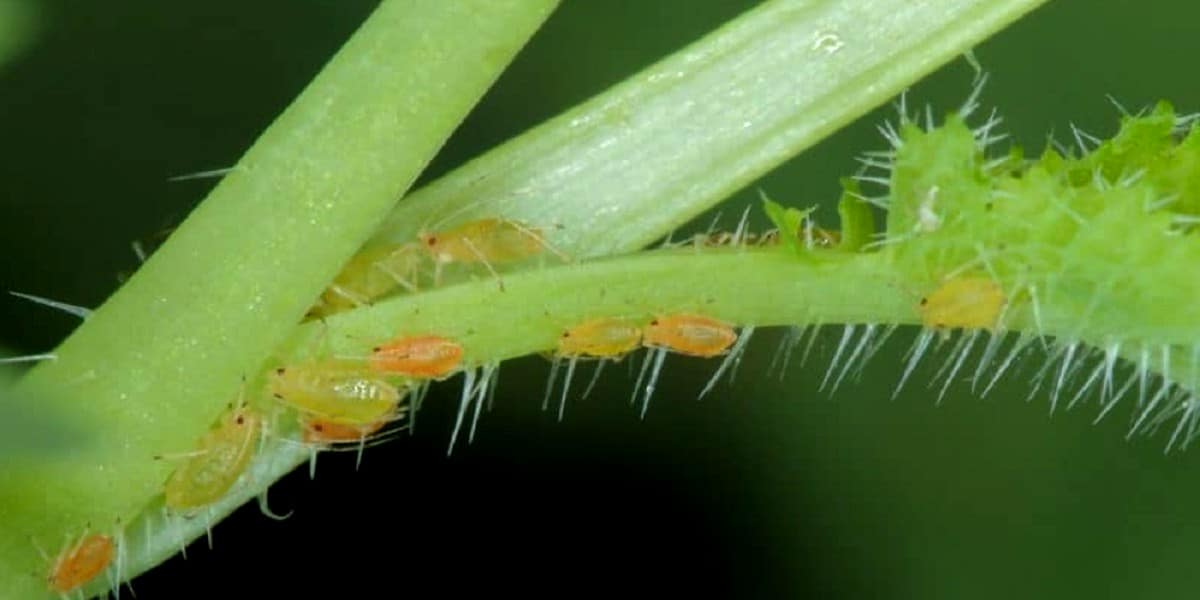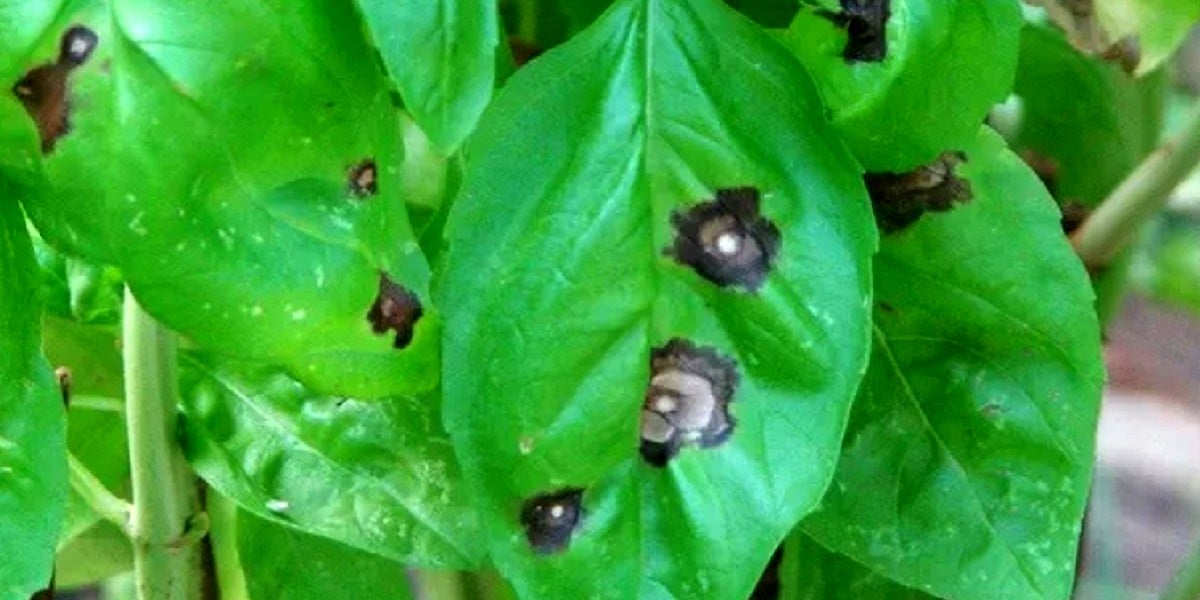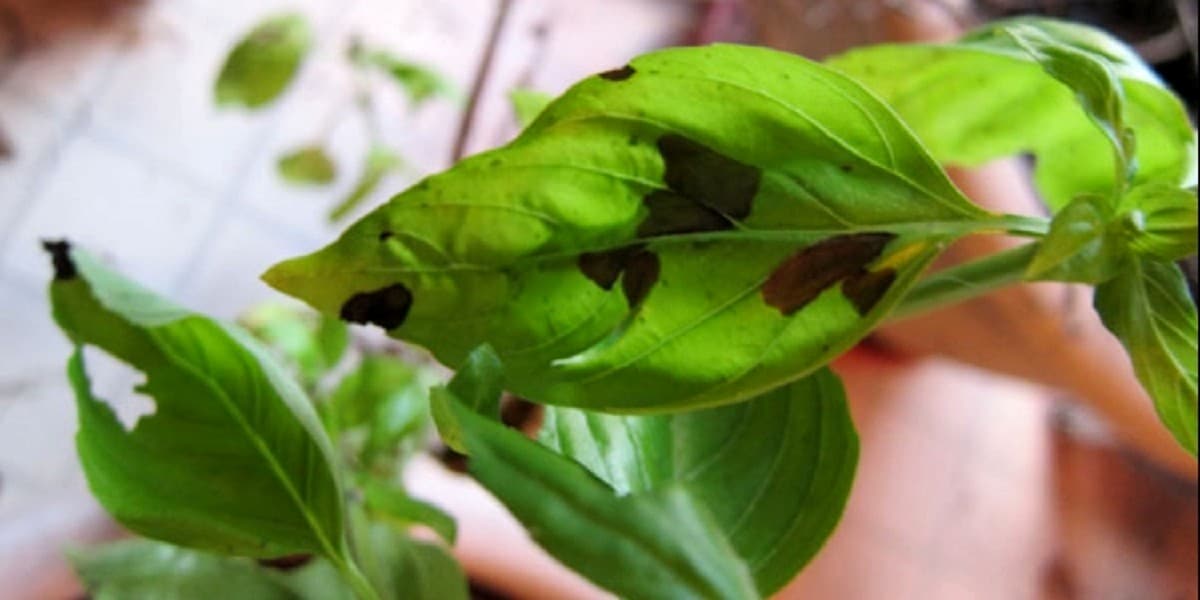Basil is not just a decorative plant that grows on your windowsill or in the garden. It is one of the most favorite herbs used in kitchens around the world. It is well known for its unique taste and aroma. Leaves of basil are extremely popular in cuisines of Italy, France, and even Northeast Asia. The US cooks quickly got used to this beautiful greenery, calling it the “king among herbs.” What can you do if one day you find black spots on basil? You need to start the treatment procedure immediately. Unlike flowers that suffer from black spot diseases, basil loses much more since it is the leaves that we like to consume so much.
The most popular types of basil plants in the US:
- Cinnamon basil;
- Sweet basil;
- Lemon basil;
- African blue basil;
- Lettuce-leaf basil;
- Holy basil.
Each type can be found around the US. Meanwhile, all of them are also vulnerable in front of black spots disease. There are numerous causes of this illness. You need to find out them in order to identify the disease properly. If you have concerns about it, you can use a specific app that recognizes plant disease by the photo.
About Basil Black Spots
Black spots on basil leaves are not a rare problem. Once you notice them, you need to identify the disease and start the curing process. There are several causes of basil dark spots on the leaves. Here they are:
- Bacteria or fungi that provoke the illness. For example, your plant can suffer from the Cercospora leaf spot;
- Leaf miners that are feeding on the leaves, as well as leaving their droppings on them;
- Sunburn;
- High level of humidity in the air;
- Problem with the cold air.
You have to keep in mind that there are different plant diseases that may look similar in the first place. Not all black spots are the same. You need to find out the right diagnosis to save the plant. To do this, check out the visible signs and use the app. After careful investigation, you will understand that even spots don’t look the same. They can be dry or slimy, with or without halos around them, big or small. Observe these spots to take control of the disease.
Insects
It would be a mistake to think that only you appreciate the rich taste of basil. Unfortunately, there are lots of small insects that like to feed on them too. In this case, the black spots you see are the feces left by insects. You may notice their bits around leaves. You will notice these insects if you look closely underneath the leaf.

Bacteria or fungi
Bacteria are one of the major causes of basil plant diseases. The spores of disease spread quickly on leaves. They can be brought by air or by water to the plant. The full list of infections:
- Pseudomonas Cichorii bacteria. It thrives in an environment with a high humidity level. Apart from that, it needs a high level of nitrogen in the soil. Once you overwater or over-fertilize the soil, bacteria spread even faster;
- Cercospora leaf spot fungus. It prefers to live in an environment with high humidity levels and warm temperatures. Usually, it happens due to the overwatering of basil’s leaves. If these leaves always stay moist, the air is not ventilated, and the temperature is high, you may expect to see the fungus consume basil in the next few days;
- Downy mildew. This is the parasite that is often mistaken for a fungus. While they have similar symptoms, the classification is different. It usually affects only indoor plants. There is a wide range of downy mildew types and each of them can infect the basil in your garden. The major problem of the basil is Peronospora belbahrii. Mildew prefers dark and moist places. The mildew needs a cold environment to survive.
Sunburns
Sunburns are visibly different from other types of black spots. Yet, you may mistake them for other diseases. They usually happen with gardens that are located in the northern latitude in the summer. The direct sunlight for 9 hours per day may be more than enough to burn leaves. While basil likes the sun, it is better to supply it in limited amounts. You will recognize the burned borders of the leaves in no time.
Cold
If you have an indoor plant, this problem may never occur. You don’t need to take care of it too much. Yet, once you decide that you want to transplant it in your garden, you have to constantly check the weather forecast. If there are cold days coming, they may kill the plant or damage the precious leaves. Black spots are the best sign that the temperature was too cold outside.

Symptoms You Can’t Miss on Basil
Depending on the cause of the problem, the disease cycle reveals different symptoms. If you keep an eye on the basil and will check it every day, you will notice a wide range of symptoms. Learn them, and you will understand how to treat them properly. There are no resistant species to the black spot. It is better to learn how to diagnose disease in advance to be able to protect the leaves.
How to recognize pests on leaves:
- Insects usually leave numerous small black dots. They are way smaller than the spots left by fungi but still visible. Pay attention to the area near these spots. While black spots are feces, there are yellow or white circles near them, where the insects feed;
- You will notice small insects under the leaf;
- Some insects create small bumps on the surface. They lay their eggs inside the tissue of the leaf;
- Aphids usually leave yellow substances on the leaf. It is also sticky. This substance is their feces;
- Spider mites make a wide range of webs on the leaves. You will notice them if you look closely.
How to recognize bacteria and fungi:
- Unlike insects, bacteria leave larger spots;
- The leaf dries out with time. The transmission from a healthy and juicy leaf to the dry and covered in spots happens incredibly quickly;
- Once the disease progresses, you see big holes instead of black dots. It means that the tissue is dead;
- Fungi leave huge diameter black circles. You can look for the yellow and light green haloes around these circles;
- The black circles with fungi are colored white or gray in the middle in some cases;
- Mildew that infects basil is frequently mistaken for the nutrient deficiency with its asymmetric black spots that usually resemble dirt;
- Mildew is usually located at the bottom of the leaf. You will notice spores at the bottom part of the leaf. They look similar to other infections. You will see circles colored in black too. The whole leaf, meanwhile, will be losing color and slowly dying.
Sunburn:
- Dark spots made by sunburn are not round;
- These spots are asymmetric and usually located at the border of the leaves;
- Leaves lose their color. You will see them turning yellow during the middle stage of the disease. Dark spots are a sign that the plant is dying;
- Dark spots from sunburn usually appear only at the side of the sun exposure. There will be no spots on the part that stays in the shadow.
Cold:
- Black spots from cold are small and asymmetric;
- You can identify the cold damage based on the temperature outside. If it is below 45F, you may see black spots made by the frost. No insects or sun will be able to harm the leaf at this temperature.
Here is a quick way to find the problem. These are general visible signs you may not notice in the first place. You can apply these methods for your houseplant or indoors:
- Gently shake the plant. If you see the bug, you have your type of disease;
- Stroke gently the flower. If there is a sticky yellow or white substance, the aphids left them;
- Do you see the dust at the bottom of the leaf? This is a sign of mildew;
- The spots on one side of the leaf are the signs of the sunburn;
- Do spots appear when the temperature is 40°F or below? You have the frostbite.
Methods of Prevention and Treatment
Once you understand the reason for black spots’ appearance, you can act. You don’t need to have professional education to be able to deal with the disease. However, there is a different approach to each type of black spot on basil.
Insects and how to deal with them
The best way to get rid of pests is to remove not only adult species but their eggs as well. Eggs can easily survive the cold temperature or lack of food. This is why you have to use a specific approach to them. If you missed the time and insects got to the basil, you have to follow the next steps:
- Remove all the leaves that are affected by them. It is a natural move since you unlikely want to eat their eggs or feces. You need to cut all the leaves that were touched by insects. Pay attention to the bottoms of the leaves where insects usually place eggs. Make sure you have removed all infected leaves. Do it using only sterilized shears. To sterilize them, just put the tool in the mixture of water and soap. Clean the tool each time you cut the leaf. This is the best way to prevent the micro pathogens from spreading on the plant;
- Remove eggs manually. If you have enough time and don’t want to destroy all the basil you grow, you may start with cleaning leaves from pests. There is a natural treatment for that. You can try to use soapy water to sterilize basil leaves. This way is more organic and allows you to still gather the leaves once the infestation is over and use them in the kitchen. If the infestation is severe, all you have to do is use the specific insecticide. Dip the cloth into the mixture and wipe each infected leaf. You have to repeat it for several days;
- Use the traps. There are sticky traps that may catch adult insects. Put them near the plant. It prevents the leaf miners from getting to your basil and laying eggs;
- Cover the plants. You can use row covers to stop the insects and prevent them from infesting the plant. Moreover, you will hide it from the direct sunlight or cold temperatures as well. Consider it the universal solution. Yet, you will need to make sure that the mesh is breathable and the air circulates freely.

Fungi and bacteria: dealing with the disease
You need to protect your basil from microscopic pathogens that are not visible to the human eye. If you think it is impossible, you are wrong! Once you understand that your basil is vulnerable to bacteria and fungi, you need to act:
- Remove the leaves that were infected. You will not save them. Don’t forget to sterilize your tools before you do it. Use soapy water each time you move from one leaf to another. Make sure you wash your hands before you touch the plant;
- Mulch. You can apply mulch to your outdoor plants. This natural remedy is simple to create, does not cost anything, and protects from bacteria. Mulch helps to keep the lower leaves higher above the soil, so they would not stay overwatered;
- Drench the soil. You have to avoid overwatering due to numerous reasons, including bacteria spreading. Overwatering brings a wide range of diseases and may kill your plant in the end. This is why you need to create a smart watering system;
- Bactericide and fungicide. You may find natural or chemical weapons against the enemy. The best option for the Cercospora leaf spot is a copper fungicide. It works for mildew too. As for natural treatment, you can try neem oil. It is a well-known remedy that has fungicide, miticide, and insecticide features. Apart from that, don’t forget to cut the highly infected leaves.
Temperature
No matter whether it is too hot or too cold, your basil may lose its leaves. You have to provide proper treatment. Here is what you can do:
- Take the basil indoors when the temperature gets cold outside;
- Keep the basil far from the direct sun;
- Protect basil from the sun, cold, and wind by covering it with a mesh.
Help Your Basil
Life without basil would not be so tasty. If you grow it outside the house, you have to make sure that the cold temperature or extreme sunlight will not kill the plant. It can also be attacked by a wide range of insects that feed on its juicy leaves. At home, you still have enough factors to worry about, including high humidity, bacteria, fungi, and even cold temperatures.
Follow these helpful recommendations, and you will be able to take care of your plant and see them grow. Find out how to cure basil that was already damaged by any of the major threats that were described above and use this knowledge to become a better gardener. If you have doubts about the proper identification of a disease, you can always use the app that recognizes the disease and its cause by the photo.
Leave a Reply
You must be logged in to post a comment.